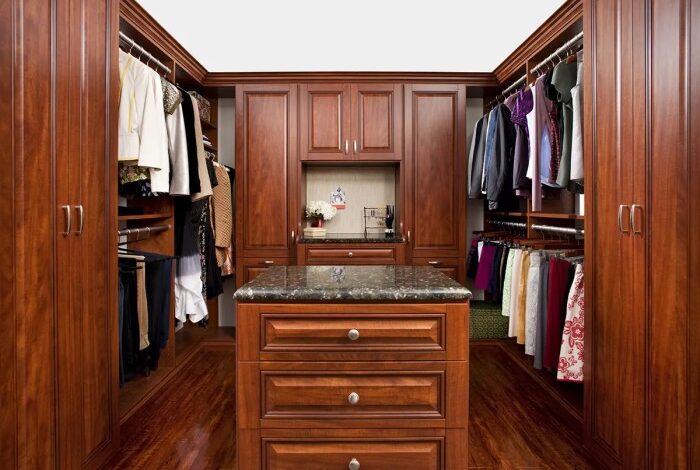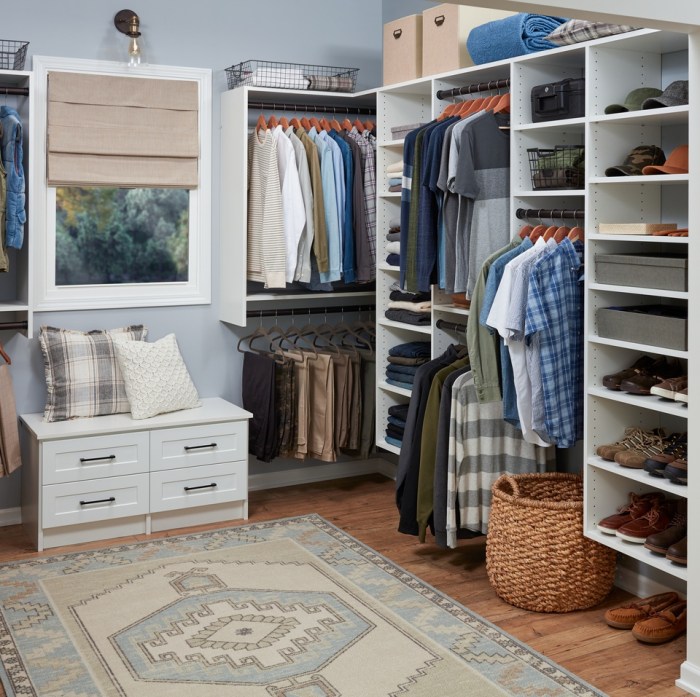
How to customize a store bought closet system? It’s a question many homeowners ask when they’re ready to take their storage space to the next level. While store-bought closet systems offer a convenient and affordable solution, they can sometimes feel generic and lack that personal touch.
But don’t worry, with a little creativity and some DIY know-how, you can transform your standard closet into a stylish and functional haven.
This guide will walk you through the entire process, from choosing the right system to adding those finishing touches that make it truly your own. We’ll cover everything from planning your design to customizing the look and feel of your closet.
Get ready to unleash your inner designer and turn that ordinary closet into a space you love.
Planning Your Closet Design

The most crucial step in customizing a store-bought closet system is planning the design. This involves understanding your closet space, the types of clothing and belongings you need to store, and how you want to organize them. Careful planning ensures that your custom closet system effectively meets your storage needs.
Measuring Your Closet Space
Before designing your closet, accurately measure the available space. This includes the width, height, and depth of the closet. Measure each section separately if your closet has multiple sections or doors. Use a tape measure and a notepad to record the measurements for reference when designing the layout.
Planning the Layout of Your Closet System
After measuring the space, start planning the layout of your closet system. Consider the following:
- Identify your needs:Determine the types of storage you require. This includes hanging space for clothes, shelves for folded items, drawers for smaller items, and accessories like shoe shelves, tie racks, and belt organizers.
- Categorize your belongings:Organize your clothes and belongings by category, such as shirts, pants, dresses, sweaters, shoes, and accessories. This helps determine the storage requirements for each category.
- Prioritize your needs:Based on the frequency of use and importance, prioritize your storage needs. For example, you might need more hanging space for frequently worn clothes than for items you rarely use.
- Consider accessibility:Ensure that all storage components are easily accessible. You should be able to reach all items without straining or needing to move other items.
Designing a Custom Layout
Once you understand your needs and have measured the space, start designing the layout of your closet system. Here’s how:
- Choose the right components:Select the shelves, drawers, hanging rods, and accessories that best suit your needs and the available space. Most store-bought closet systems offer a wide variety of components to choose from.
- Sketch a layout:Draw a rough sketch of your closet space and plan the placement of the different components. This allows you to visualize the layout and make adjustments before installing the system.
- Use the available space efficiently:Optimize the use of vertical space by using tall shelves and hanging rods. Consider adding drawers at the bottom for items you don’t use frequently.
- Leave enough space for movement:Ensure that there is enough space between the components and the walls to allow for easy movement and access to items.
Organizing a Closet System
Once you have installed your custom closet system, it’s time to organize your belongings.
- Sort your items:Categorize your clothes and belongings by type, season, and frequency of use. This makes it easier to find items and keeps your closet organized.
- Use storage solutions:Utilize drawer dividers, shelf organizers, and other storage solutions to maximize space and keep items organized. You can also use bins or baskets to store items like sweaters, scarves, or hats.
- Fold and hang items efficiently:Fold clothes according to the KonMari method or similar techniques to save space and prevent wrinkles. Hang clothes by category, color, or sleeve length for easy access.
- Maintain a clean and organized closet:Regularly clean your closet and discard or donate items you no longer need. This ensures that your closet remains organized and efficient.
Maintaining Your Closet System: How To Customize A Store Bought Closet System

A well-maintained closet system will last for years, providing you with efficient and organized storage. By implementing a simple cleaning and maintenance routine, you can ensure that your closet remains functional and looks its best.
Cleaning and Maintaining Your Closet System, How to customize a store bought closet system
Regular cleaning is essential to prevent dust, dirt, and grime from accumulating and potentially damaging your closet system.
- Dusting:Use a soft cloth or a feather duster to wipe down shelves, rods, and drawers. Pay special attention to corners and crevices where dust can accumulate.
- Vacuuming:Use a vacuum cleaner with a brush attachment to remove dirt and debris from the floor and the bottom of the closet.
- Wiping Down:Wipe down surfaces with a damp cloth to remove any remaining dust or grime.
- Inspecting for Damage:Inspect the closet system for any signs of damage, such as cracks, scratches, or loose screws. Address these issues promptly to prevent further damage.
Organizing and Maximizing Storage Space
Maximizing storage space in your closet involves efficient organization and the use of space-saving solutions.
- Decluttering:Regularly declutter your closet to remove items you no longer need or use. Donate, sell, or discard items to create more space.
- Vertical Storage:Utilize vertical space by using shelves, hanging organizers, and shoe racks. This maximizes space and allows you to store more items.
- Folding Techniques:Use efficient folding techniques like the KonMari method to maximize space in drawers.
- Storage Bins:Utilize clear storage bins to store seasonal items or items you don’t use frequently.
Preventing Common Problems
By taking preventative measures, you can avoid common problems that can arise with closet systems.
- Sagging Shelves:Ensure shelves are properly supported and evenly loaded to prevent sagging. Consider using shelf supports or adding additional brackets for heavy items.
- Broken Drawers:Avoid overloading drawers and use drawer slides that are rated for the weight of the items you store.
- Loose Screws:Tighten loose screws regularly to prevent them from coming loose and causing instability.
I’m finally tackling that closet organization project I’ve been putting off! I’m thinking about using a store-bought system, but I’m also considering some DIY touches. After all, who needs a fancy closet system when you can just get creative with some basic supplies?
Maybe I’ll get some inspiration from my recent quick biz trip to Phoenix , where I saw some really cool design ideas. Once I’m done with the closet, I’ll share my tips and tricks for customizing a store-bought system on a budget.
Customizing a store-bought closet system can be a fun DIY project. You can add personal touches like decorative trim or paint, or even get more adventurous and try your hand at upholstery. My recent learning new skills adventures in upholstery have given me some great ideas for adding custom cushions or padded shelves to my closet.
It’s amazing how a little creativity can transform a basic closet system into a stylish and functional space.
Customizing a store-bought closet system can be a fun and rewarding project! You can add personality with paint, wallpaper, or even fabric panels. If you’re looking for some extra inspiration, check out the Brown Thomas Join Us Styling Workshop for tips on organizing and styling your closet space.
After all, a well-organized closet makes getting dressed a breeze, and who doesn’t love a little extra organization in their life?

